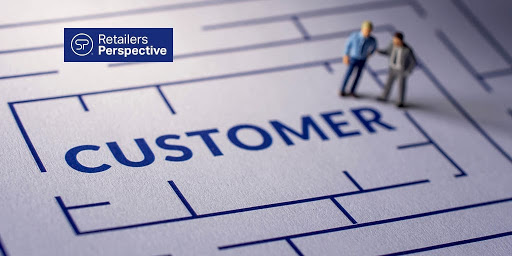Customers have sooo many online options to buy what they want and need these days. What can you do to keep customers coming into your stores? Particularly as we face more lockdowns - what can brick and mortar stores do to keep doors open long term? You can focus on creating great customer experiences—and you can get your vendors to help!
Great experiences make up the most critical thing customers will come back to a store for. Or avoid a store if their experience is poor. Customer experiences come in some different forms right now, with face-to-face shopping limited. But the customer experience is still created in curbside pickups, over the phone, through social media, over email, and the like.
How do you create the best customer experience?
Your store employees are at the center of creating customer experiences. No matter the interaction scenario, they still need to be ready to interact with confidence and knowledge. You need to get them trained and motivated right, and you don't have to organize this alone.
Let's look at your current process.
Retailer L&D teams have a broad employee training responsibility, but at the core, it boils down to three areas:
1) Processes and procedures;
2) Soft skills;
2) Product knowledge.
It's the third one you can significantly enhance with proper vendor support. And we can show you how.
Retail Training KPIs - What Should You Measure?
Issues with product knowledge training
When it comes to product knowledge training, this usually involves a retailer reaching out to vendors for material and courses. Larger retailers often have the means to invite vendors to create courses ready for import into their LMS. But this can be problematic as many brands do not have an efficient way to pop in and develop courses as requested. A majority of the time, they need to hire a 3rd party to create courses, which leads to a long turnaround period. Or they may attempt to produce a course themselves, with QA processes also slowing things up.
From the initial request to delivery, a retailer may successfully obtain a course after several weeks or more. That's a long time for products to be sitting on shelves without proper orientation given to employees!
More common, some brands simply email specs and PDFs to retailers, with no additional support. From there, retailer L&D teams forward that material on to general managers to distribute, or they may create a flat, unengaging course out of the material.
These training methods do not adequately drive sales or result in good customer experiences.
The inherent problems are:
-
The material is not engaging to retail employees–the material is dull, too long, and not mobile-friendly;
-
Many vendors lack an easy-to-use tool to generate good training content;
-
The velocity of information flowing to RSAs is slow–studies show that people learn and retain information much better when it is frequently delivered in bite-size segments.
Employees will never be confident in selling products they know nothing about. They cannot make customers feel cared for when they fumble over what to say in answering customer questions about products. Well trained, prepared employees only improve customer experiences.

Improving the customer experience through vendor support
If vendors had a user-friendly tool to create the type of content proven to resonate with retail employees that would also help drive sales, they would use it. They would be particularly interested if you could provide them with reporting on such involvement to gauge their time investment.
NOTE: The lack of reporting offering transparency into vendor support of retail training is a huge complaint brands have. Retailers often provide high-level stats on the number of employees trained, providing no insight into how their training has helped sales.
Providing vendors with an easy-to-use tool to generate learning content that works is a game-changer in getting them to help train your employees. After all, brands know their products best. They can tell the stories behind the products, share their company's mission statement, and generally inspire others about their products far better than the retailer’s L&D team. You just have to facilitate a way for vendors to easily train your employees.
The Ultimate Guide to Training Retail Employees
SellPro Can Help!
Our unique mobile-optimized platform empowers your vendors with direct access and easy tools to create, QA, deploy and deliver micro-learning training directly to your store personnel. And our platform allows for reporting that correlates product training and knowledge retention against metrics like customer satisfaction and revenue.
We provide you with:
1) A platform that employs training methodology proven to work with retail employees;
2) Real-time transparent and interactive reporting;
3) A way for the platform to be free of charge for retailers or even to be used as a revenue center when they get their vendors involved.
Want to learn more? Schedule a meeting with our team!
Additional Resources
Getting Your Vendors Involved for Better Retail Store Training
4 Signs Your LMS is Stuck in the Last Century
3 Benefits of Embracing Strong Retail Employee Communication


